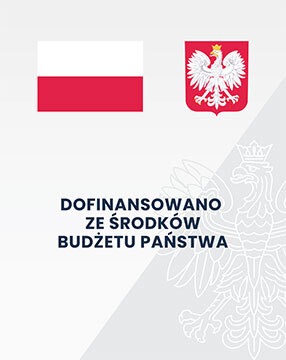Badania nad kulturą cyfrową (cyberkulturą) – analiza domeny wiedzy na podstawie danych bibliograficznych z bazy Web of Science
Abstrakt
Cel/Teza: Celem była ocena stanu badań nad „kulturą cyfrową / cyberkulturą” poprzez analizę domeny wiedzy. Drugim celem było porównanie wyników uzyskanych poprzez prostą analizę danych bibliograficznych z bazy Web of Science z wynikami mapowania i wizualizacji danych w CiteSpace.
Oryginalność/Wartość poznawcza: Dziedzina wiedzy „kultura cyfrowa / cyberkultura” jest stosunkowo nowa. Badania w tej dziedzinie prowadzone są głównie w ramach nauk humanistycznych, społecznych i technologii informacyjnych.
Wyniki i wnioski: Stosunkowo niewielka grupa badaczy wnosi zauważalny wkład. Jednak różne metody analizy tego samego zestawu danych bibliograficznych prowadzą do różnych wniosków. Badania oparte na danych bibliograficznych mogą być jedynie podstawą pełnej analizy domeny wiedzy.
Słowa kluczowe
Kultura cyfrowa; Cyberkultura; Analiza domeny wiedzy; Dane bibliograficzne; CiteSpace; Baza danych Web of Science
Bibliografia
Bell, D. (2007). Cyberculture Theorists. Manuel Castells and Donna Haraway. London & New York: Routledge, Taylor & Francis Group.
Bell, D., Loader, B.D., Pleace, N., Schuler D. (eds.), (2004). Cyberculture. The Key Concepts. London–New York: Routledge.
Benkler, Y. (2006). The Wealth of Networks: How Social Production Transforms Markets and Freedom. New Haven and London: Yale University Press.
Börner, K. (2010). Atlas of Science: Visualizing what we know. Cambridge: MIT Press.
Chen, Ch. (2017). Science Mapping: A Systematic Review of the Literature, Journal of Data and Information Science, 2(2), 1–40, http://dx.doi.org/10.1515/jdis-2017-0006
Chen, Ch. (2020). How to Use CiteSpace, Lean Publishing.
Chen, Ch., Ibekwe-SanJuan, F., Hou, J. (2010). The structure and dynamics of co-citation clusters: A multiple-perspective co-citation analysis. Journal of the American Society for Information Science and Technology, 61(7), 1386–1409, https://doi.org/10.1002/asi.21309
Connell, R., Collyer, F., Maia, J., Morell, R. (2019). Knowledge and Global Power. Making New Sciences in the South. Clayton, Victioria: Monash University Publishing.
Chuquihuanca, Y.N., Pesantes, S.S., Vásquez, R.L., Vargas E. (2021). Cultura digital desde el contexto universitario en tiempos de pandemia Covid-19, Revista Venezolana de Gerencia, 26(95), 802–817.
Deuze, M. (2006). Participation, Remediation, Bricolage: Considering Principal Components of a Digital Culture. The Information Society, 22(2), 63–75. https://doi.org/10.1080/01972240600567170
Dijck van, J. (2009). Users like you? Theorizing agency in user-generated content. Media, Culture and Society, 31(1), 41–58, https://doi.org/10.1177%2F0163443708098245
Fortunato, S., Bergstrom, C.T., Börner, K., Evans, J.A., Helbing, D., Milojević, S., Barabási A.L et al. (2018). Science of science. Science, 359(6379), [15.07.2022], https://www.science.org/doi/10.1126/science.aao0185
Gere, Ch. (2008). Digital culture. London: Reaktion Books.
Giannini, T., Bowen, J.P. (2019). Museums and Digital Culture. New Perspectives and Research, Springer, Cham, 2019.
Hjørland, B., Albrechtsen, H. (1995). Toward a New Horizon in Information Science: Domain-Analysis. Journal of the American Society for Information Science, 46(6), 400– 425.
Hjørland, B. (2002). Domain Analysis in Information Science: Eleven Approaches – Traditional as Well as Innovative, Journal of Documentation, 58(4), 422–462.
Hjørland, B., Hartel, J. (2003). Afterword: Ontological, epistemological and sociological dimensions of domains. Knowledge Organization, 30(3–4), 239–245.
Jenkins, H., (2006). Convergence Culture: Where Old and New Media Collide. New York: New York University Press.
Jenkins, H. (2009). Cultura da Convergencia. ALEPH.
Kleinberg, J. (2002). Bursty and hierarchical structure in streams, Paper presented at the Proceedings of the 8th ACM SIGKDD International Conference on Knowledge Discovery and Data Mining, Edmonton, Canada, 2002, [22.09.2022], http://www.cs.cornell.edu/home/kleinber/bhs.pdf
Koosel, S. (2011). Discourses in digital culture research. Kunstgeschichte. Open Peer Reviewed Journal, [15.07.2022], http://www.kunstgeschichte-ejournal.net/172
Kozinets, R.V. (1998). On netnography: Initial reflections on consumer research investigations of cyberculture. Advances in Consumer Research, 25, 366–371.
Kozinets, R.V (2002). The field behind the screen: Using netnography for marketing research in online communities. Journal of Marketing Research, 39(1), 61–72, https://doi.org/10.1509%2Fjmkr.39.1.61.18935
Lewis, S.C. (2012). The tension between professional control and open participation. Journalism and its boundaries. Information Communication and Society, 15(6), 836–866, https://doi.org/10.1080/1369118X.2012.674150
Levy, P. (1999). Cibercultura. Sao Paulo: Ed 34.
Macek, J. (2005). Defining Cyberculture”. In: P. Binková & J. Volek (eds.), Cyberspace 2004 – Normative Frameworks, Masaryk University Press, 35–65.
Manovich, L. (2001). The Language of a New Media. Cambridge: The MIT Press.
Miller, V. (2020). Understanding Digital Culture, London: Sage Publications.
Mongeon, P., Paul-Hus, A. (2016). The journal Coverage of Web of Science and Scopus: A Comparative Analysis. Scientometrics, 106(1), 213–228.
Osińska, V. (2021). Mapy nauki. Badania, potencjał oraz wyzwania na przykładach. [Science maps. Research, potential and challenges with examples]. Toruń: Wydawnictwo Naukowe Uniwersytetu Mikołaja Kopernika.
Prensky, M. (2001). Digital natives, digital immigrants. On the Horizon, 9(5), 1–2.
Shifman, L. (2014). Memes in Digital Culture. Cambridge: MIT Press.
Silver, D. (2000). Introducing Cyberculture, [22.09.2022], http://www.dvara.net/HK/introcyberculture.asp
Smiraglia, R.P. (2015). Domain analysis for knowledge organization: Tools for ontology extraction. Oxford: Chandos Publishing.
Su, X., Li, X., Kang, Y. (2019). A Bibliometric Analysis of Research on Intangible Cultural Heritage Using CiteSpace. Sage Open, 9(2), (2019), [15.07.2022], https://journals.sagepub.com/doi/10.1177/2158244019840119
Su, X., Li, X., Kang, Y. (2020). A Bibliometric Analysis of Research on Intangible Cultural Heritage Using CiteSpace. In: Ch. Chen, How to Use CiteSpace, Lean Publishing.
Synnestvedt, M.B, Chen, Ch., Holmes, J.H. (2005). CiteSpace II: Visualization and Knowledge Discovery in Bibliographic Databases”. In: AMIA Annual Symposium Proceedings Archive, [22.09.2022], https://www.ncbi.nlm.nih.gov/pmc/articles/PMC1560567/
Zawojski, P. (2018). Cyberkultura. Syntopia sztuki, nauki I technologii [Cyberculture. Syntopia of art, science and technology]. Katowice: Wydawnictwo Naukowe Uniwersytetu Śląskiego.
https://orcid.org/0000-0003-4484-7265
Biogram:
ZBIGNIEW OSIŃSKI, doktor habilitowany, profesor w Instytucie Nauk o Kulturze UMCS w Lublinie; specjalności: nauka o informacji, cyfrowa humanistyka. Najnowsze publikacje: Osiński Z. (2020). Big data w praktyce badawczej humanistów – problemy metodyczne, [w] Big Data w humanistyce i naukach społecznych, red. A. Firlej-Buzon, Warszawa: Wyd. SBP, s. 13–32. Osiński Z. (2021). Information literacy of Polish state administration officials in the context of the concept of “good governance”. Journal of Information Literacy, vol. 15, no. 2, p. 4–25. Osiński Z. (2021). Wykorzystanie Google Scholar do identyfikowania najczęściej cytowanych badaczy i ich prac naukowych. Przypadek publikacji z zakresu nauki o informacji w języku polskim. Zagadnienia Informacji Naukowej – Studia Informacyjne, vol. 59, nr 1, s. 49–80.
Kontakt do Autora:
zbigniew.osinski@mail.umcs.pl
Instytut Nauk o Kulturze
Uniwersytet Marii Curie-Skłodowskiej w Lublinie
Marii Curie-Skłodowskiej 4
20-031 Lublin, Polska

Utwór dostępny jest na licencji Creative Commons Uznanie autorstwa – Użycie niekomercyjne – Bez utworów zależnych 4.0 Międzynarodowe.
CC BY-NC-ND 4.0 Uznanie autorstwa - Użycie niekomercyjne - Bez utworów zależnych 4.0 Międzynarodowe





